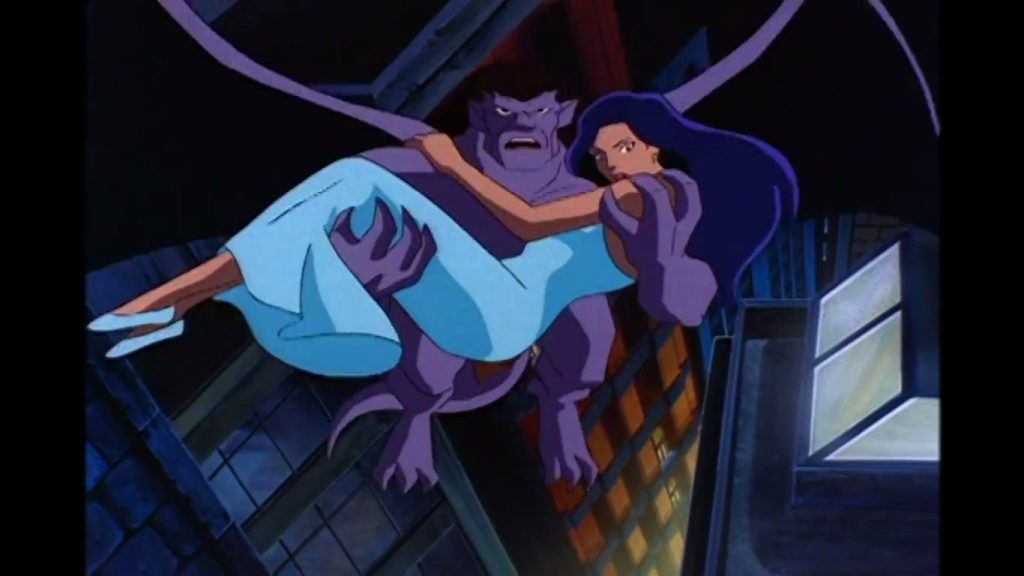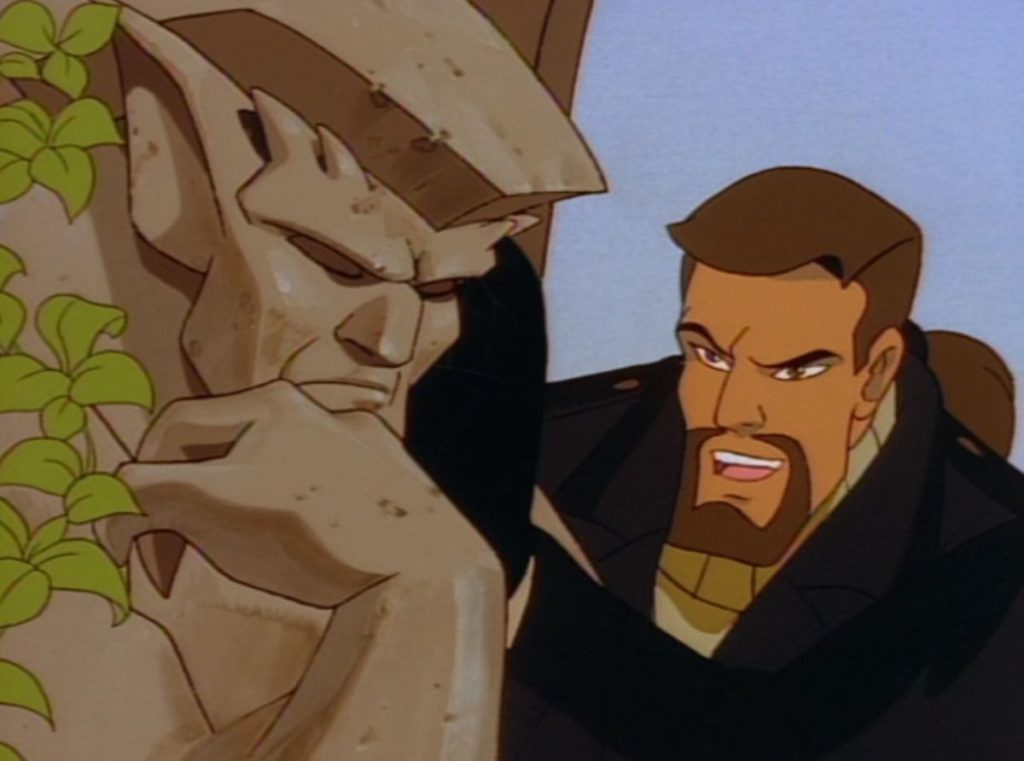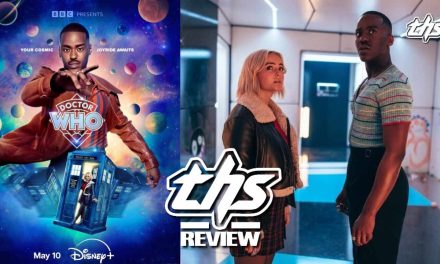At the 2024 WonderCon, I had the chance to discuss Disney’s Gargoyles with its creator Greg Weisman. The show is celebrating its 30th anniversary since debuting on the Disney Afternoon. We got a few minutes to discuss how the show came to be, its legacy, and so much more.
THS: Why do you think fans still talk about and love Gargoyles to this day?
Weisman: It’s probably different for each individual fan. Personally, we wanted to create a show that we wanted to see on television. Unlike a lot of shows from that era who were making things the audience wanted to see. We said, “Let’s be bold!” We crossed our fingers that the audience would come with us and they did.
I wrote the show on many levels. For the youngest audience, there were explosions and humor. For an older audience, we had shades of grey, complex themes, and long term story arcs. I think that’s why the show has stuck around.
THS: Over the years, Gargoyles has had a variety of iterations. It’s had a video game, board game, and comic books. Is there anything in particular that you love about the legacy of Gargoyles?
Weisman: Conceptually, I always thought the show was pretty interesting. I love that the Gargoyles are protectors. They have a spell cast on them in the 10th century and wake up in the 20th century in Manhattan. I like that they choose to protect that city. I thought that was a fresh idea. It felt fresh in 1994. Thirty years later, it still feels fresh.

THS: When you first pitched the show, it was more comedic. As it developed it became darker and developed longer story arcs. What was the reasoning behind that decision? Do you think it helped set you apart at the time?
Weisman: When we pitched the show to Michael Eisner it was a very different show. The premise was the same, but there was no Goliath character. There were a bunch of cute, little gargoyles running around. Our inspiration was Disney’s Adventures of the Gummi Bears. I adore that show. It was created by Jim Baker. We set out to make a show like that. We thought that it would get more attention and more respect. Instead of a bunch of cute teddy bears running around, we were making cute multi-colored creatures. Instead of setting it in the past, we had created a story that would put them in the present.
That didn’t sell, so we sat down and created the character of Goliath. We saw the entire show through him, but I never think of the show as dark. Because of the story, it’s set mostly at night, yet think of the colors we used like purples with neon lights, and blues, and whites. It’s very rich with color. For example, and I’m not knocking it, but in Batman: The Animated Series, the backgrounds were drawn onto black. We tried to be different by adding more light. We still had comedy. The show had romance.
We were never serialized either. Gargoyles was episodic and sequential. Back in the ’90s, people could watch the episodes in any order and it would still make sense. It would mean more if they did watch it in order. That helped because our audience would think, “Oh I can’t miss this episode because something here will pay off down the road. If I miss this episode, I’ll miss some of the payoffs.” That was a model you didn’t see much in those days.

THS: It was a very different show and those stories have always stood out to me. Specifically, I wanted to ask what it was like pitching the love story between Goliath, a stone creature, and Elisa, a human woman? Was that a hard sell?
Weisman: No, in fact, that is what sold the show. Disney had this little movie called Beauty and the Beast. It might have made a little bit of money for the company. We had pitched the show twice and struck out twice, so when I stepped up to the plate for the third time, I focused on the relationship between Goliath and Elisa. The Beauty and the Beast-like relationship is something Eisner understood. That was actually not a hard sell. Once we were up and running, we just did what we wanted. Nobody was minding the store to some extent. We got away with stuff that we probably wouldn’t have otherwise.
The trick for us was to always write the show on multiple levels. We create things that kids could appreciate. They might not get the complex stuff, but they liked the explosions, action, and humor. For adults, and those paying closer attention, you were rewarded with some intriguing stories. You could watch something and think “Oh my gosh, they planted that idea way back in an earlier episode.” By planting those seeds, it became a show people wanted to watch and revisit.
THS: Another piece of the show that I find interesting is how well defined the humans and villains are in the show. They are relatable and have complex relationships with the gargoyles. What was the process in creating shades of gray for these characters?
Weisman: Xanatos and Demona, I think, are really original characters. They weren’t evil or immoral. They were amoral. For Xanatos, specifically, he wasn’t interested in conquering or destroying the world. The world was working out great for Xanatos. He was a billionaire and in the 1990s that meant even more. He didn’t need to change the world, but he wanted to take advantage of it. That was so unique for cartoons of the time, and so unique that the TV trope “The Xanatos Gambit” came from it. It was just so new for the time.
Demona was also a complex villain. She was along the lines of Magneto from the X-Men. She had legitimate gripes against the human race, but always took it too far. In a way, she was her own worst enemy.
Those two characters, I think, were also a big reason why the show was as successful as it was because they were truly unique. Even today, thirty years later, they have charm. Xanatos is a strangely charming guy. Demona, when she isn’t shooting at you, is very charming. Even when they are doing evil things, they’re still charming.

THS: The show has aged gracefully. It fits into the streaming landscape well and its story about billionaires and our complex world seems more relevant than ever. That said, if you were given the chance to remake the show now, would you do anything different or is it perfect as is?
Weisman: I wouldn’t say it’s perfect. There are little things we wanted to do, but because of time and budget we couldn’t. On the other hand, I still wouldn’t remake it. If I had the chance, I’d just make more. If Disney approached me saying “Let’s start over” I would say, “Hey you have this thing on streaming. Lets do a new season and pick up where we left off.” We could still set it in the ‘90s. Why not?
I don’t feel a need to go back and redo everything we did before because I think what we did was great. Is it perfect? No, but I think the original 65 episodes hold up really well.
THS: Personally I revisited Gargoyles last year. I even made a video essay about it. It’s always been a favorite. I’m curious though, is there any storyline, whether it’s in the show or the comic books, that is your personal favorite?
Weisman: My favorite episode of the show is called “The Mirror” which introduced Puck. I just think the animation is great. The writing is great. The voice acting is great. That was one of those episodes where I think we knocked it out of the park. I think that one stands out, but I do love all of the episodes. Some turned out better than others, but there isn’t one I would ditch.
As far as the comics, I just finished up the Gargoyles Here in Manhattan for Dynamite Comics. I’m very proud of that. It has the trial of Goliath. I also just finished up the Dark Ages prequel series which is set in the 6th century even before the show starts. We see Goliath as a teenager. I’m also about to start on Gargoyles Quest, which is a great story where Demona seeks power to destroy the Gargoyles.

![‘Gargoyles’ Creator Greg Weisman Talks 30th Anniversary [Interview]](https://thathashtagshow.com/wp-content/uploads/2024/04/Gargoyles-Greg-Weisman-Interview-1280x640.png)


